Pink trees can add so much color to your garden during the spring, autumn, and summer months.
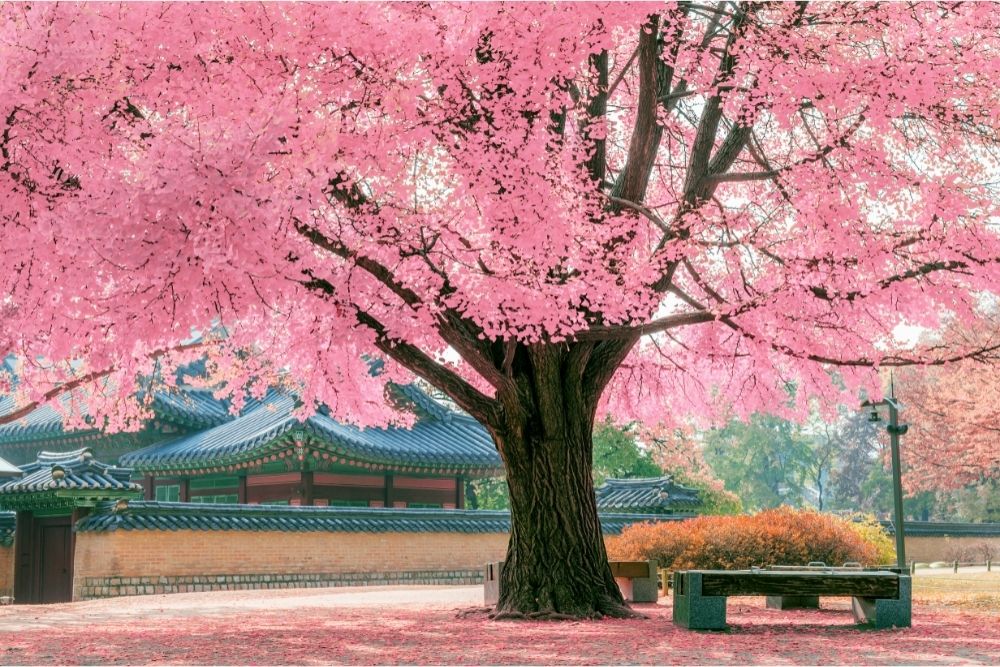
They will add a lot of interest, regardless of whether they produce pink flowers, or have pink foliage.
Read on to find out some of our favorite pink trees, so you can add some beautiful pink tones to your yard.
1. The Eastern Redbud Tree

Eastern redbud trees are stunning flowering trees that produce pink blossoms in spring, which can light up your garden as everything turns from winter to spring.
Branches are totally saturated in bright pink petals, making this a striking plant, and may people rarely forget the first time that they see an eastern redbud in full bloom.
The tree looks like a pink exploding in springtime.
They even have heart-shaped leaves that come out in a beautiful red color, then turn green, and then vivid canary yellow before finally falling in Fall.
In addition to its stunning (and year-round!) beauty, the eastern redbud is well adapted to a wide range of conditions and climates, meaning that it thrives in most soil types and levels of sun exposure.
It’s a great pick for basically any garden if you are looking for a burst of color in your garden – just do your research into where is best to place it, to get the healthiest tree.
RELATED: 13 Different Types Of Russian Trees
2. The Flowering Cherry Tree
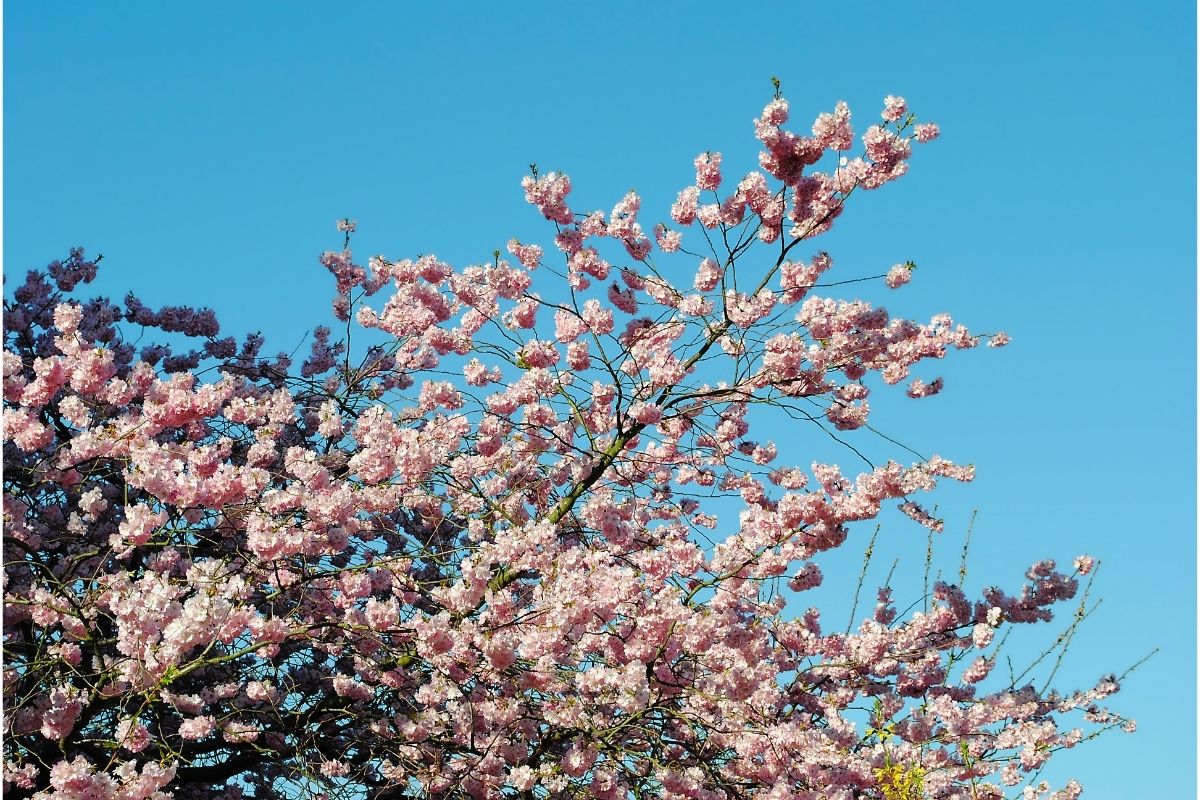
There are so many types of flowering cherry trees, and they are probably one of the first things to spring into your mind when you think of pink trees – they are utterly ubiquitous with springtime.
The cherry trees burst into a pink blossom of one of the earliest signs that spring is coming to break the cold of winter.
There are a few different varieties of flowering cherry trees, so you can find one that will be the perfect size for your yard (generally, they come between 9 and 32 feet tall).
These trees will also attract birds to your yard, as they will eat the cherries produced in later spring/summer that are usually a little sour for human tastes. All types will grow well in full sun.
3. The Magnolia Tree
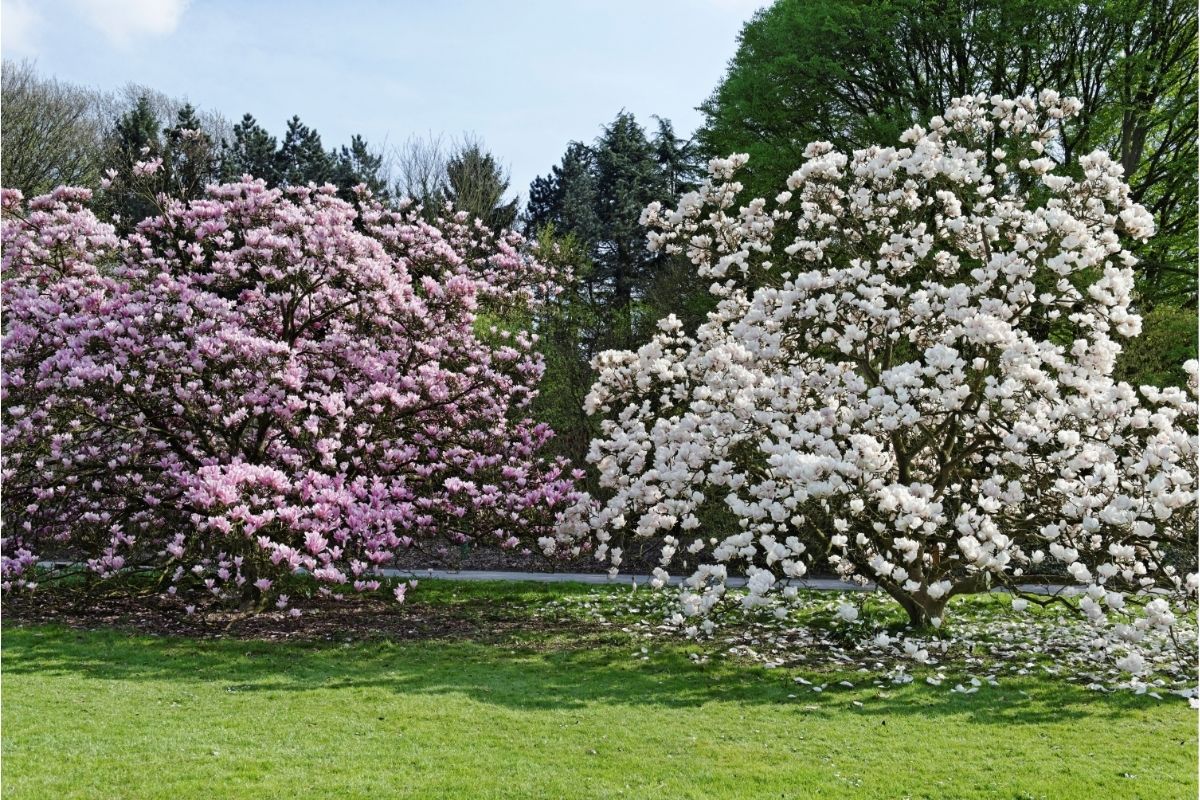
The beautiful magnolia plant is well known for its showy display of springtime flowers, distinctive fragrance, and glossy dark green leaves.
Magnolias can be purchased in both shrub and tree form – but regardless of what size you have, they can add a great pop of pink color to your yard.
They’re ideal as a standalone tree, as they are so striking when they flower in the spring/summer period.
They aren’t always pink though. The magnolia blooms can come in a wide range of colors, including white, yellow, and purple.
If you do want to have pink accents running through your garden, make sure that you pick a variety that produces pink flowers.
If you have a magnolia tree in your yard or are planning to put on in, then you should be aware that they have quite shallow roots (rather than tap roots).
They will need to be watered often during hot, dry weather, or you run the risk of them drying up and dying.
4. The Tricolor Beech Tree
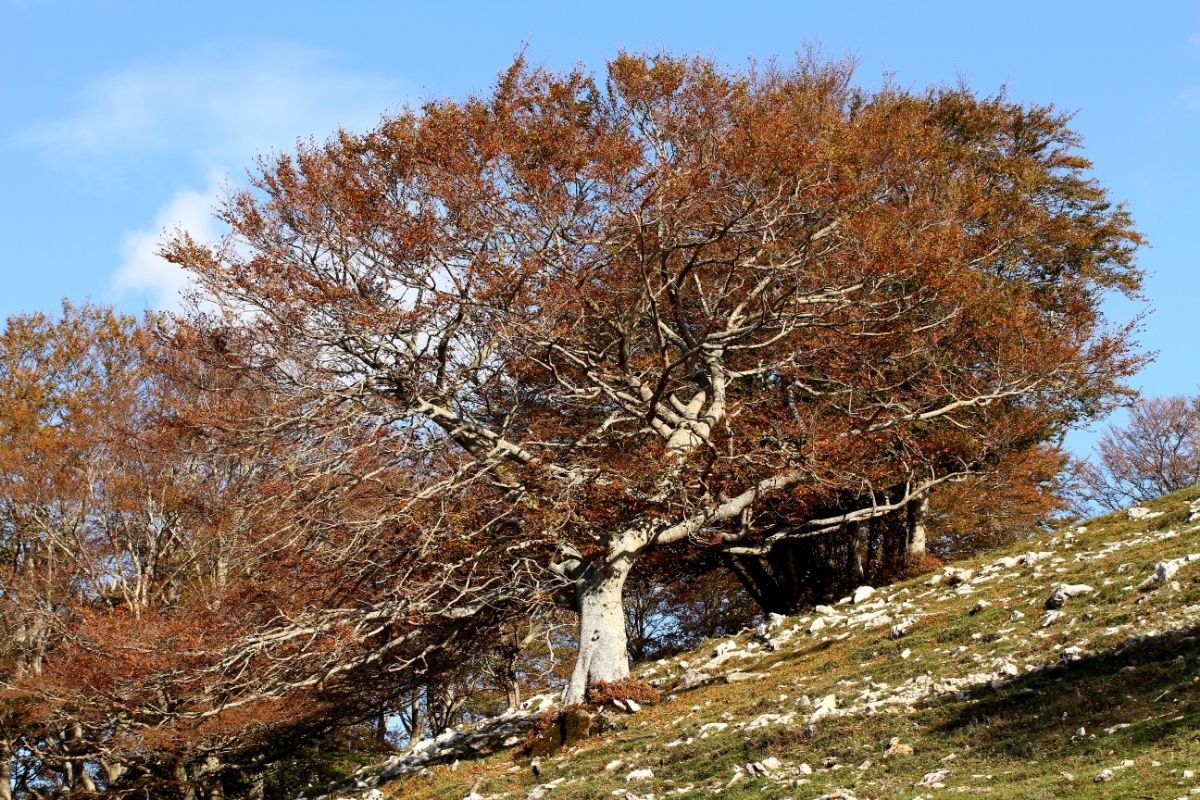
This tree has a set of foliage (rather than flowers, like the ones that we have already discussed), which is variegated and pink.
The leaves are pink, white, dark purple, and green, making it a really distinctive and beautiful tree to have in your garden. It is a totally unique-looking kind of European beech tree.
It has quite low branches and has smooth gray bark like a lot of other beech trees.
The foliage is what sets this plant apart from other trees and beech specimens.
They are wavy, slightly oval, and have a variegated pattern, which is white at the outermost edges, then pink, then dark green or dark purple. From a distance, these leaves give the trees a rose tint.
Before buying this tree, though, it is important to know that the leaves aren’t always shades of pink – they turn a copper color in the fall, and then the tree sheds its foliage.
The following spring, yellow and green leaves will sprout up from April to May.
It can grow as large as 40 feet tall, and 30 feet wide, though it is usually quite a bit smaller than that.
It is a lot more manageable than the standard European beech, and other similar varieties, as it is very slow growing in its youth, though can speed up a little as it matures.
5. The Crape Myrtle Tree
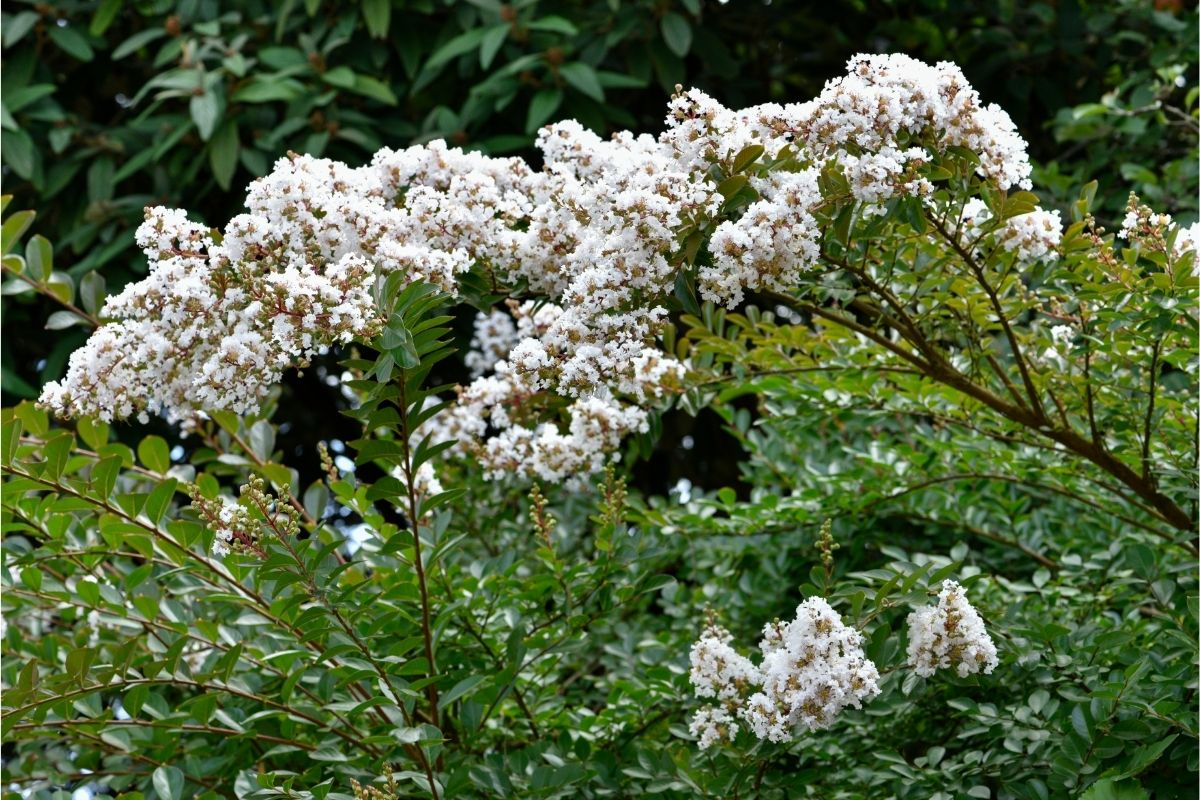
The crape myrtle tree is a deciduous flowering tree that can tolerate both mild touches of frost and high summer heat.
Unlike other plants on this list – the crape myrtle does not flower in early spring, but rather produces fluffy-looking ruffled flowers, that take their name from crape paper.
There are a lot of varieties of the crape myrtle tree, and you can purchase ones that are a diddly 2-foot shrub, all the way up to a towering tree that will effortlessly be the centerpiece of your garden.
There are a few different color options too, as you can get crape myrtle trees in hot pink, pale pink, lavender, deep purple, vibrant red, and maroon.
You can even get them as a single trunk tree, a multi-trunk tree, or a standard.
6. The Dogwood Tree
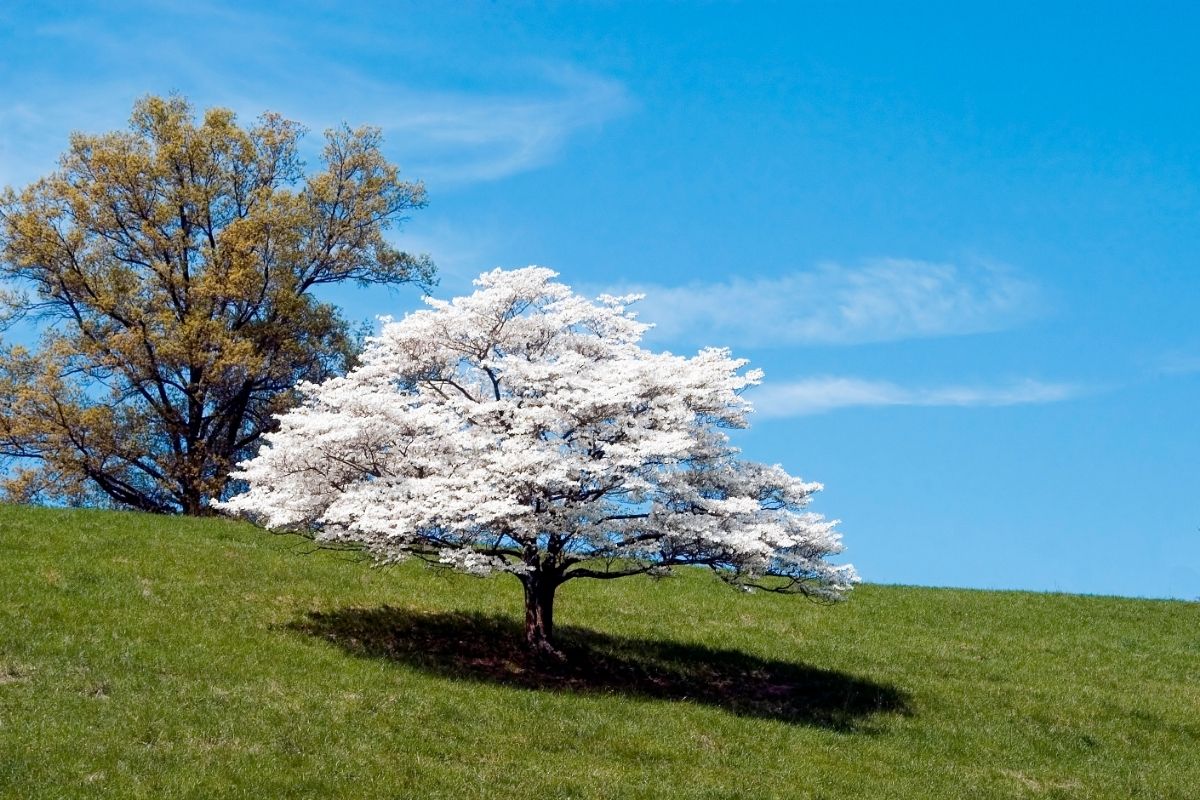
Dogwood trees are another deciduous flowering tree, which is particularly well adapted to areas that get both cool winters, and warm summers (making them a garden favorite across many parts of Europe).
If you think your area qualifies as one of these regions, then you can look forward to your dogwood blooming beautiful pink flowers in early spring.
They don’t just come in pink though – if that doesn’t take your fancy, you can purchase varieties that come in red and white as well.
These plants aren’t just loved for their spectacular color though. Dogwoods are pretty well known for having colored bark and leaves that go red in Fall before dropping off. Having a dogwood tree or shrub in your garden ensures that you will have some color in your flower beds all year round, rather than just in the springtime.
RELATED: La Nature Est Belle! 43 Different Types Of French Trees
7. Acer Palmantum ‘Pink Passion’
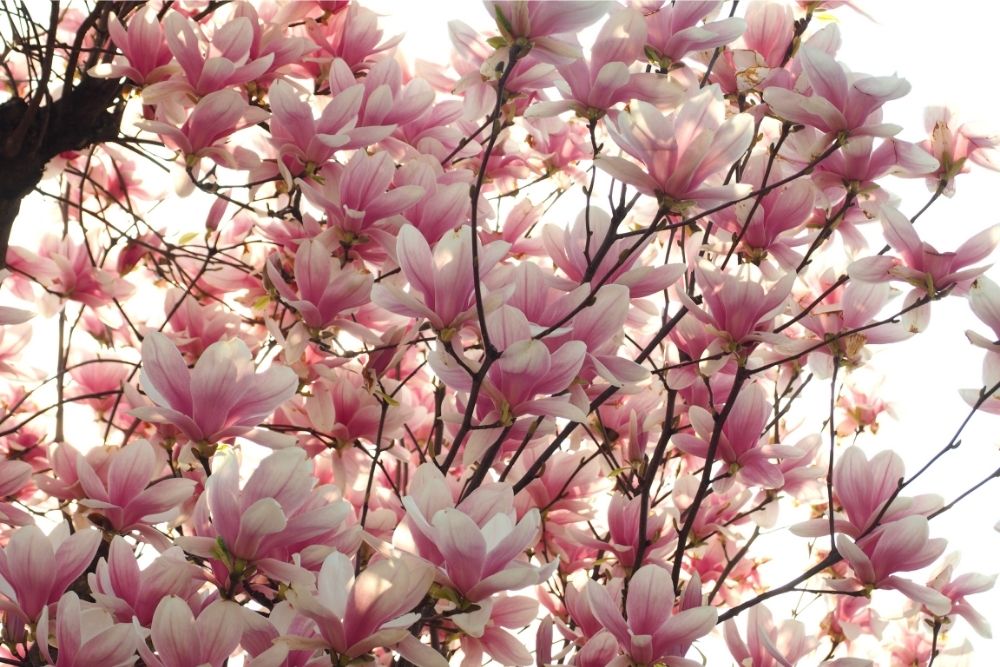
Acers, also known as the Japanese maple tree, are some of the most well known and well-beloved ornamental plants.
They come in a huge variety of colors and sized, which add great coloring to your garden as they change across the season. The Acer Pink Passion is no exception – producing vividly colored leaves.
They start out cherry red when first growing in spring, and then turn a variegated dark pink in the summer.
Finally, in fall, the leaves turn a brilliant scarlet before shedding for the winter.
The ever-changing leaves will add constant interest to your garden, helping to complement the colors of the seasons as they change with time.
It’s a slow growing plant which has a long life span, making it a great investment for your yard.
8. Acer Palamantum ‘Taylor’
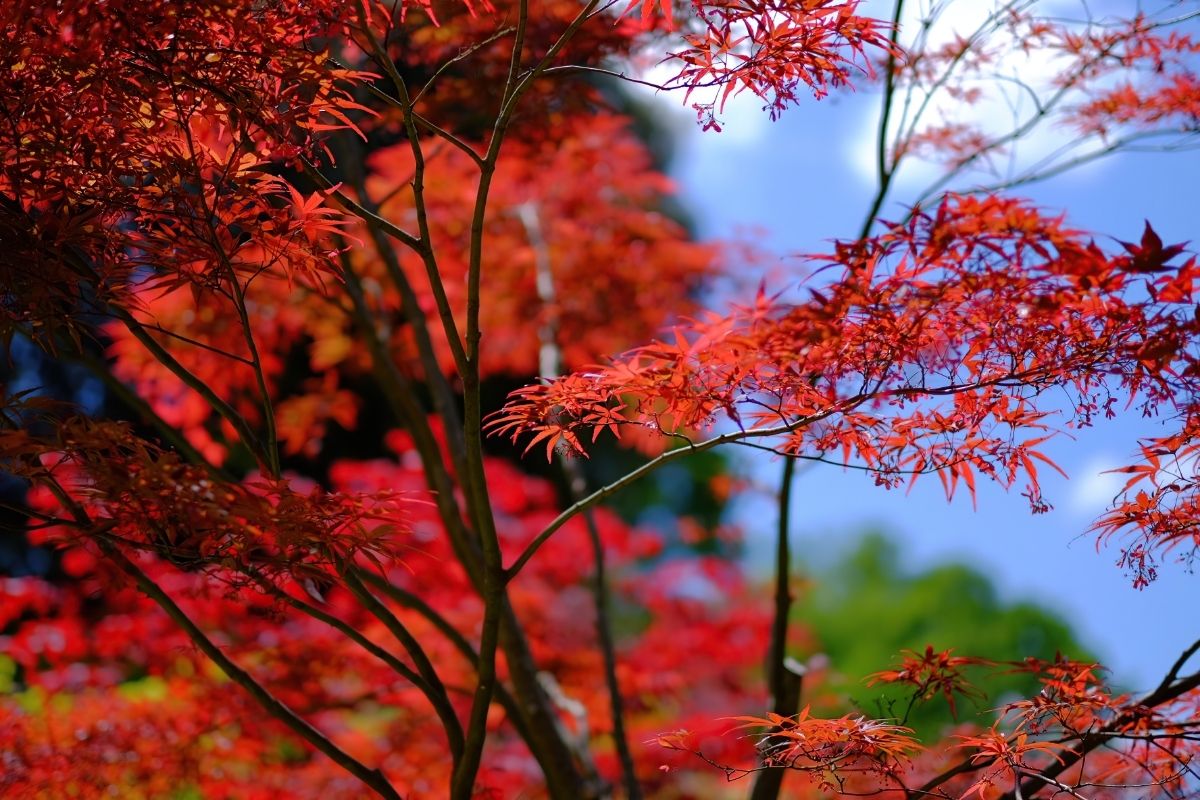
This is another Acer/Japanese maple tree, just like the pink passion above.
However, it is produces a different range of colors, making it a different option for the inclusion of natural shades of pink in your garden.
Rather than vivid, hot, or wine pink, it produces leaves that are a more pastel toned salmon pink. Though not as bright, it still makes an impact, even in big, lush gardens.
When the leaves begin to sprout in early spring, they are a pale pink, which deepens as they mature.
In summer, the leaves will have turned a variegated pale green, which is still really attractive, and compliments other shade that are blooming in your garden at that time.
Just like its sibling, pink passion, the Taylor Acer is an easily manageable plant, as it is a small and slow growing tree. It is ideal for smaller gardens, and will thrive in small bed or containers.
The Acer can even be grown in a range of sunlight strengths – from full sun to shade.
9. The Orchid Tree
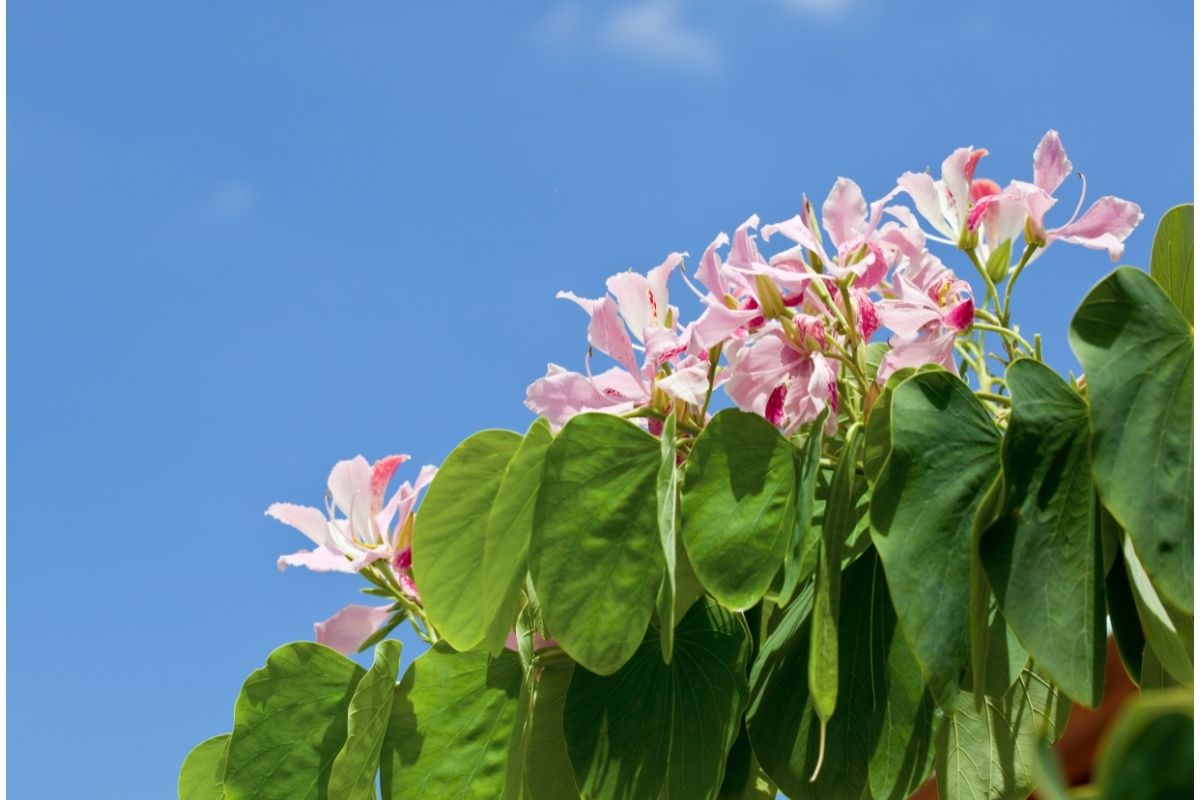
The orchid tree is one of the most low maintenance pink plants that you can plant in your garden.
Just make sure you plant them in the right position, as they adore full sun and warmer climates (as they are native to South East Asia).
The flowers (as the name suggests) look a little like orchids, and some in a range of colors, though pink is one of the most widespread and popular options for people’s ornamental gardens.
Do check whether this plant is considered an invasive environmental weed in your area though – as it is in Australia, Florida, New Caledonia, Cuba, and the Bahamas.
Final Thoughts
Pink trees are a great option for adding a little pink pizzazz to your garden.
With our extensive list you are guaranteed to find something that look great amongst your other plants, and will thrive in your garden type.
Do your research about these trees – as, although they are the same color, they will be susceptible to different pests and diseases, they thrive in different conditions, and flower at different times.
Editor’s Recommendations
How To Save An Overwatered Peace Lily From Dying? A Comprehensive Guide
Why Are My Calathea Leaves Curling, And, How To Fix It Fast?
Morel Mushrooms: Key Steps in Growing These Rare and Delicious Mushrooms







